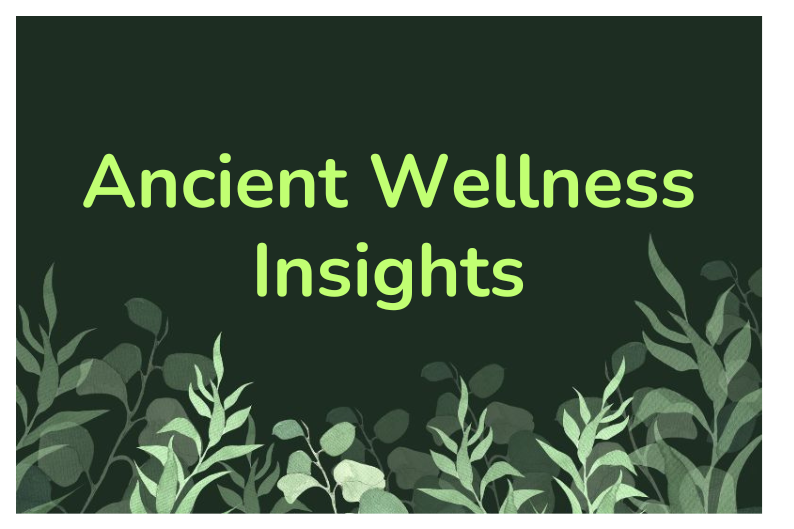
Ancient Insights: Tongue, Nail, and Herbal Health for Wellness
Tongue Diagnosis, Nail Health Signs, Herbal Observation: Ancient Insights for Modern Wellness
Natural health traditions teach that the body speaks through small changes that are easy to miss. By paying close attention to the tongue, nails, and even common herbs, anyone can spot early signs of imbalance and support their well-being. Experts like Gary Brecka and Barbara O'Neil have long encouraged listening to these natural signals, fostering a deeper connection to health without modern medical trappings.
People may notice that the tongue can reveal shifts in organ health and energy, while nails can point to deficiencies or stress. Learning to observe these changes, combined with traditional herbal knowledge, can help guide daily choices. MC Herbs believes that with the right awareness and carefully chosen herbal supplements, individuals can nurture their health naturally, simply by starting to notice what their body is showing them.
Key Takeaways
- Observation of tongue and nails can offer clues to well-being
- Herbal awareness supports the body’s natural signals
- MC Herbs supplements help maintain balance and health
Fundamentals of Tongue Diagnosis in TCM
Tongue diagnosis in traditional Chinese medicine (TCM) is a respected art. This practice uses visual inspection of the tongue to reveal clues about a person's qi, yin, yang, and the condition of internal organs.
Principles Behind Tongue Observation
TCM views the body as an energetic system. The tongue is seen as a mirror, reflecting the quality of qi, blood, and body fluids in the organs. When a trained practitioner looks at someone's tongue, they are not just seeing a surface, but the internal balance or imbalance of the whole person.
Experts such as Gary Brecka and Barbara O’Neil highlight how tongue color and texture can give early signs of issues before symptoms appear. This fits the holistic approach in Chinese medicine, where prevention is key.
MC Herbs recognizes that early observation is crucial. Their herbal blends are crafted to support the energetic systems in line with ancient TCM ideas.
Mapping Tongue Areas to Internal Organs
Every part of the tongue is linked to a different organ system. This is sometimes called "tongue mapping." The tip of the tongue can show the health of the heart and lungs. The sides often tell about the liver and gallbladder. The center typically connects to the spleen and stomach, while the root points to the kidneys and bladder.
Table: Tongue Areas and Related Organs
| Tongue Area | Related Organs |
|---|---|
| Tip | Heart, Lungs |
| Sides | Liver, Gallbladder |
| Center | Spleen, Stomach |
| Root (Back) | Kidneys, Bladder, Intestines |
When someone uses MC Herbs supplements designed for specific organs, positive changes may start to reflect on the matching tongue area. Practitioners trained in this map use such observations for deeper Chinese medicine diagnosis.
Key Features: Color, Shape, Coating, Moisture
A careful look at the tongue involves several main features:
- Color: A healthy tongue is usually light red. Pale may show qi or blood deficiency. A red tongue can indicate too much heat. Purple hints at blood stagnation.
- Shape: Swollen, thin, or teeth-marked edges show fluid or organ imbalances.
- Coating: The coating's color and thickness (white, yellow, thin, thick) offer clues about cold, heat, or dampness in the system.
- Moisture: A dry tongue may point to impaired body fluids. Excessively wet can show yang deficiency.
Barbara O’Neil often encourages regular checking of these signs. Combining MC Herbs' targeted herbal formulas with the wisdom of tongue diagnosis helps users maintain the energetic balance at the heart of TCM. For an in-depth guide, see how TCM tongue diagnosis connects these features to wellness.
Recognizing Health Signs: Tongue and Nails
The body shows visible signs that may reveal much about inner health, especially when viewed through traditional methods. By learning to observe changes in the tongue and nails, many find early clues about imbalances and deficiencies.
Common Tongue Indicators: Pale, Red, Purple, and Swollen Tongue
A tongue’s color and shape hold important meaning in the world of natural health. A pale tongue can signal blood deficiency, which may lead to weakness or fatigue. A red tongue is often linked with excess heat, sometimes caused by stress or chronic inflammation.
Those with a purple tongue may be facing blood stagnation, often seen alongside chronic pain or circulatory sluggishness. In contrast, a swollen tongue is connected to the presence of phlegm or water retention, and sometimes points to digestive sluggishness. Many traditional herbalists, inspired by teachings similar to those of Gary Brecka, use these signs to guide observation and care. To help manage these patterns, some choose herbal blends such as those offered by MC Herbs, which are designed to gently support balance in the body.
Tongue Coating and Body Fluids: Dampness, Dryness, and Deficiency
Examining the coating of the tongue provides valuable details. A white tongue coat often suggests the build-up of dampness or phlegm, which may result from a sluggish digestion or an imbalanced diet. Dry tongues show poor body fluids and can point to yin deficiency, common in those suffering from night sweats, anxiety, or irritability.
When the coating is very thin or missing, it may reveal deeper deficiencies, sometimes related to chronic stress, overwork, or depletion of body resources. Traditional systems look for these clues to guide food and lifestyle changes, sometimes recommending mild herbal teas from MC Herbs to foster better hydration and nurture yin energy.
Table: Tongue Coating and Associated Conditions
| Tongue Coating | Common Meaning | Possible Signs |
|---|---|---|
| Thick white | Dampness, phlegm | Heaviness, sluggishness |
| Dry or peeled | Yin deficiency | Dry mouth, restlessness |
| Yellow | Excess heat | Irritability, redness |
Nail Health Signs and Their Implications
Fingernails can mirror what is happening inside the body. Pale or ridged nails may hint at blood deficiency or poor circulation. Spoon-shaped nails sometimes suggest low iron. Nails with purple or bluish tones sometimes point to blood stagnation or slow oxygen flow.
White spots or horizontal lines could mean mineral shortfalls or past stressors. These subtle signs help many followers of natural approaches like Barbara O'Neil’s, to view nail changes as gentle reminders. Herbal products and nutritional blends from MC Herbs, especially those rich in minerals and blood-nourishing herbs, are often used to help restore balance.
Common Nail Clues
- Pale nails: Possible blood deficiency
- Bluish nails: Blood stagnation or poor circulation
- White spots: Mineral deficiency or stress
- Ridges: Slowed growth or chronic depletion
Integrative Herbal Observation and Recommendations
Herbal observation ties together the signs from both tongue and nail examination, weaving a fuller picture of health. For example, a pale tongue with ridged nails would call for herbs that support blood, while a red tongue and yellow coat are best met with cooling botanicals.
Specialists often favor combinations of herbal formulas, acupuncture, and lifestyle changes to nudge the body toward harmony. The philosophy aligns with MC Herbs’ natural supplements, which are carefully formulated to address common patterns like yin deficiency, excess heat, and body fluid imbalances.
Always, traditional observation values gentle, consistent support over quick fixes—encouraging mindful self-care through herbs, rest, and regular assessment of tongue and nail signs.
Frequently Asked Questions
Traditional Chinese and Ayurvedic practices believe much can be learned about the body through simple observation. Tongue and nail health are seen as windows into nutritional status, inner balance, and overall well-being.
What nuances in tongue appearance are indicative of health issues in Chinese medicine?
In Chinese medicine, details such as color, shape, coating, and moisture of the tongue often reveal specific patterns. A pale tongue may show a lack of energy or blood, while a red tip could point to emotional stress. Thick yellow coating, cracks, or teeth marks along the sides are all considered clues toward internal imbalances. Learn more about these nuanced signs from this overview.
How can cracks on the tongue be interpreted in terms of health?
Cracks on the tongue are not only common but can point to different issues depending on their location and depth. Central cracks might hint at digestive weakness, while cracks all over may suggest dryness or a need for more fluids. Many natural health advocates recommend supporting hydration and gentle cleansing herbs, like some offered by MC Herbs, to help restore balance.
What are the traditional Ayurvedic indications of nail health?
Ayurveda teaches that nails reflect tissue health, nutrient stores, and subtle energies. White spots sometimes suggest mineral deficiency. Brittle or ridged nails could be tied to Vata imbalance, while yellowish hues are linked to Pitta. Ayurveda emphasizes gentle nourishment and herbs to support nail vitality, many of which can be found as supplements at MC Herbs.
How might a naturopathic practitioner assess someone's health from observing their tongue?
Naturopathic practitioners view the tongue as a landscape of the internal organs and systems. They note coating, size, color, and moisture, linking them to digestion, hydration, and detox functions. This perspective is influenced by traditional wisdom and supported by natural supplement strategies, including those available at MC Herbs.
What can variations in fingernail color and texture suggest about one's well-being?
Subtle changes in fingernails may be an early sign of nutritional, metabolic, or circulatory shifts. Pale or bluish nails could point to low oxygen, while horizontal ridges might show recovery from illness or stress. Consistent dullness or peeling signals a need for additional supportive nutrients, such as biotin-rich blends from herbal experts.
How is a Qi deficiency reflected on the tongue according to traditional beliefs?
Qi, seen as the body's vital energy, is reflected in a tongue that may be pale, swollen, or have teeth indentations along the edge. This is said to indicate slower energy movement or fatigue. Supportive routines including rest and herbal tonics, such as those from MC Herbs, are often encouraged in response to a Qi deficiency.
